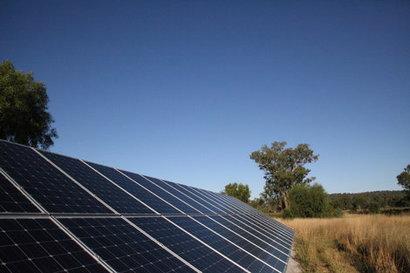
Around 20,000 people already work in the sector, providing £321 million to the Exchequer, according to a new report by BiGGAR Economics. It was commissioned by Solar Energy UK and launched at the Solar & Storage Live London conference and exhibition at the Excel Centre, London.
Put together, the two sectors are estimated to have contributed £1.9 billion to the economy last year, expressed as gross value added (GVA). Furthermore, jobs in the industry and its supply chain contributed almost £90,000 in GVA on average, over 40 percent more than the UK average.
By the report’s estimation, at the end of last year solar generation capacity stood at 20 gigawatts, consisting of 4.2 GW on homes, the same on commercial-scale rooftops and 11.5 GW mounted on the ground. This is consistent with other industry estimates. Battery energy storage systems (BESS) in homes are estimated to come to 1 GW, those in commercial premises being put at 0.5 GW and grid-scale BESS at 6 GW, totalling 7.5 GW at all scales.
Current projections are that solar capacity will rise to 90 GW in 2035, with 15.3 GW on homes, 15.3 GW at commercial scale and 59.3 GW of solar farms. Residential and commercial-scale BESS installations are each projected to hit 8.3 GW, with 33.3 GW at grid-scale.
The findings show that there could be as much as £3.5 billion of GVA provided from solar energy at all scales by then, with 28,700 jobs. Meanwhile, expanding BESS installations would deliver 1.6 billion of GVA in 2035, employing 13,900 people. For the residential sector alone, solar energy and BESS are projected to deliver 7,960 jobs in 2035, contributing £537 million to the economy.
Together, the sectors could contribute up to £698 million to the public finances in 2035, through income tax, national insurance, VAT from employee expenditure, corporation tax and non-domestic rates.
“This report highlights that as well as contributing to renewable energy targets, the solar and storage sector is having a substantial and growing impact on the UK economy” said Graeme Blackett, Managing Director of BiGGAR Economics, who led the research. “The diversity of the impacts is striking, including for example, installers of domestic rooftop solar, specialist construction and engineering services for utility scale storage and providing income diversification for farmers.”
The expansion of solar farms is already playing a significant role in the rural economy, helping to keep hard-pressed farmers in business by providing a dependable income. Last year, payments to them are estimated to have come to around £61 million. They are expected to be well over £300 million in 2035, equating to 7 percent of the total income that English farms received in 2023, according to Department for the Environment, Food and Rural Affairs.
“Growing renewable energy generation at pace, alongside the capacity to store it, is obviously of critical importance to meet the UK’s climate change goals” added Gemma Grimes, Director of Policy and Delivery at Solar Energy UK. “But beyond being cheap, flexible and low-carbon, the effects of solar and battery energy storage on the economy have played little part in public discourse to date. The report makes clear that the sectors are already a significant economic player, with their anticipated growth making them a massive stimulus within the next ten years.”
Aside from being the least expensive source of energy, solar energy also enjoys the highest level of public support compared to others, with solar farms being most popular among people who live near them. As the report notes, “It is also easily scalable, suitable for residential, commercial, and large, utility scale applications, and can be deployed more quickly than other renewable technologies. These features make solar an attractive way of supporting the electrification of the UK’s energy system.”
As the UK’s electricity networks decarbonises, battery systems are becoming increasingly used to store excess energy for use during low production times, such as the evenings. BESS therefore helps to balance the flow of power in and out of the grid, providing stability and reliability. Being inherently modular, it is also suitable for all scales of application.
For additional information:

